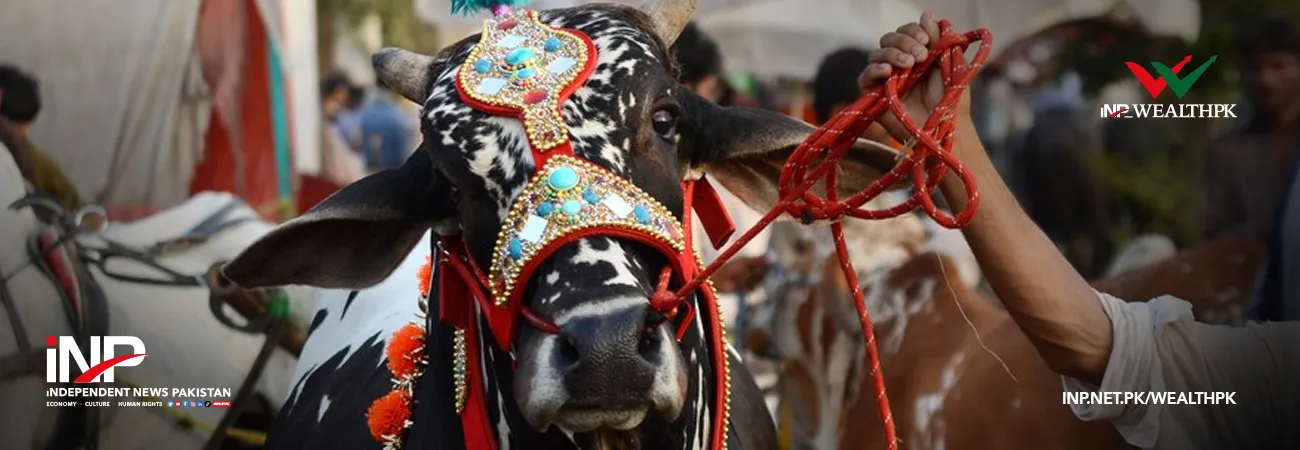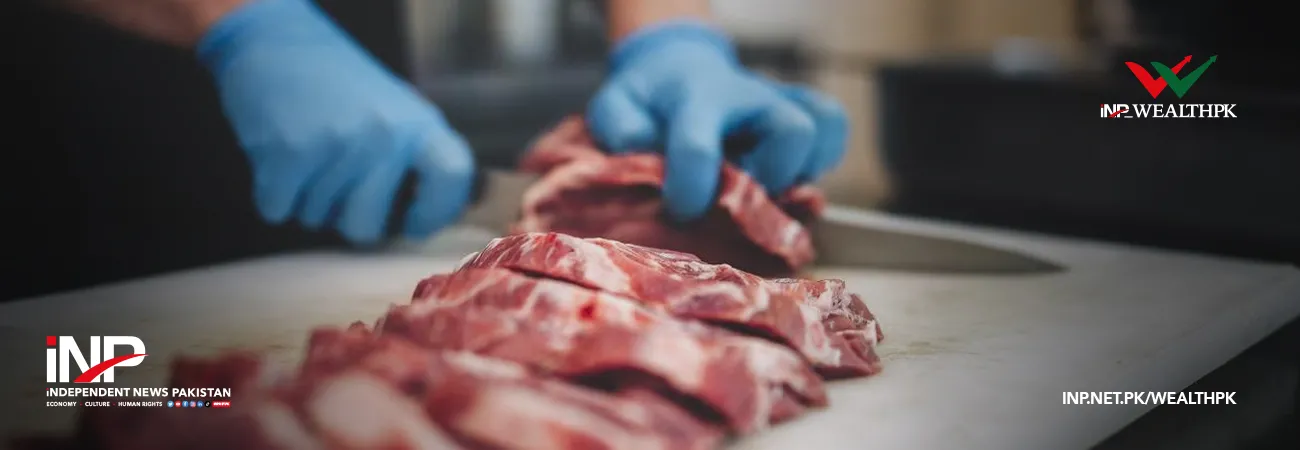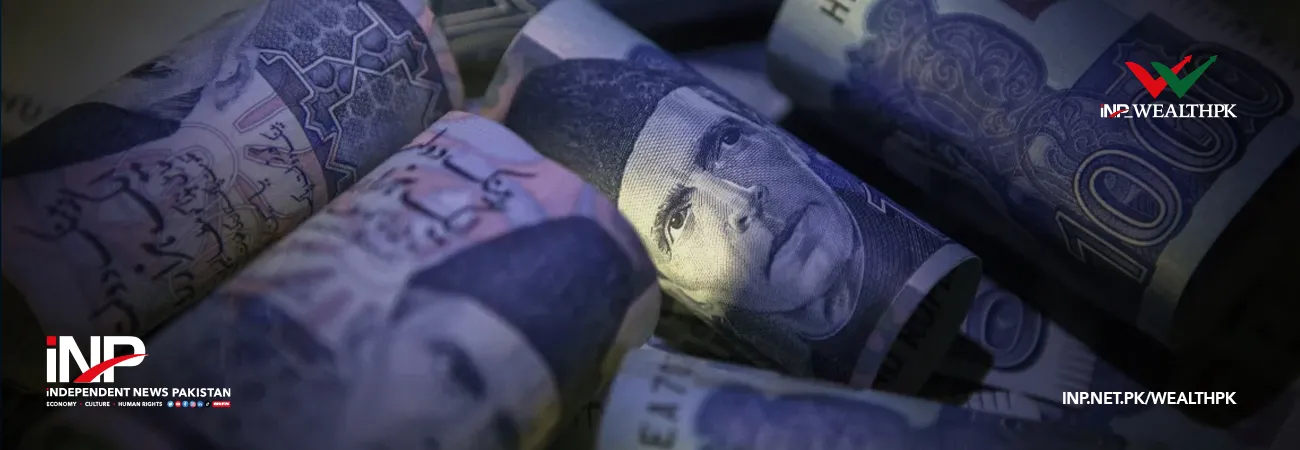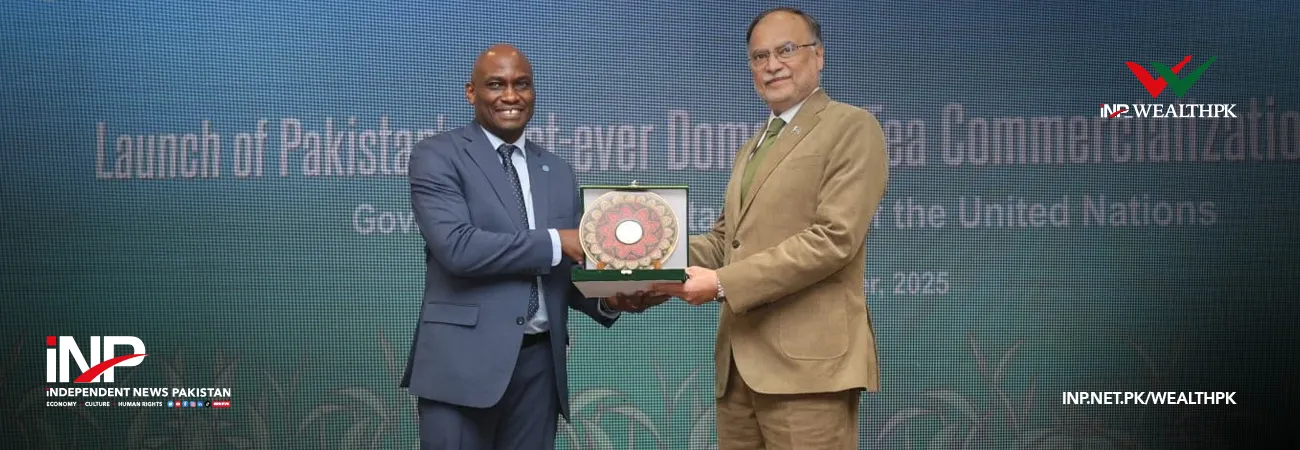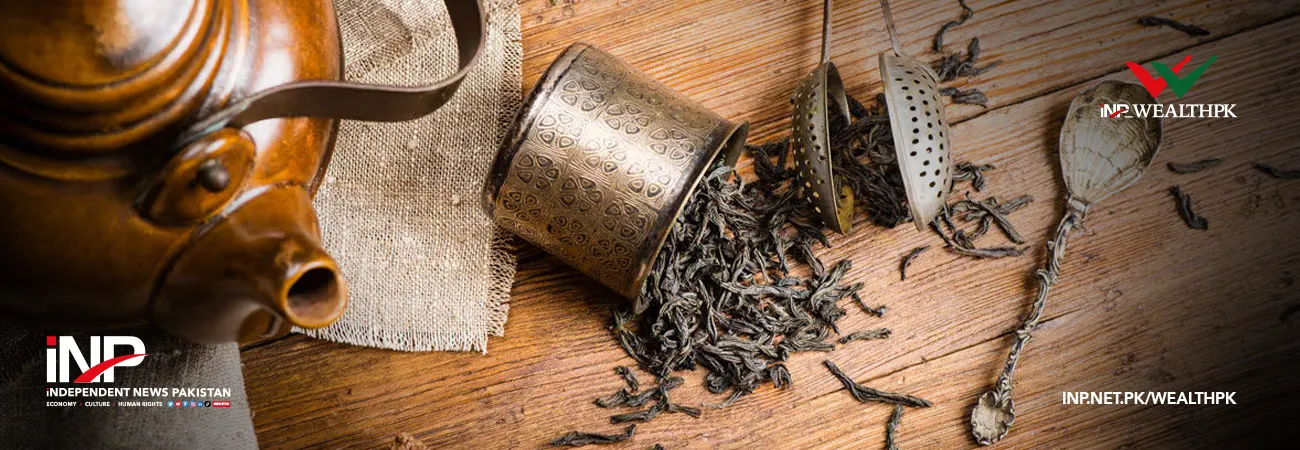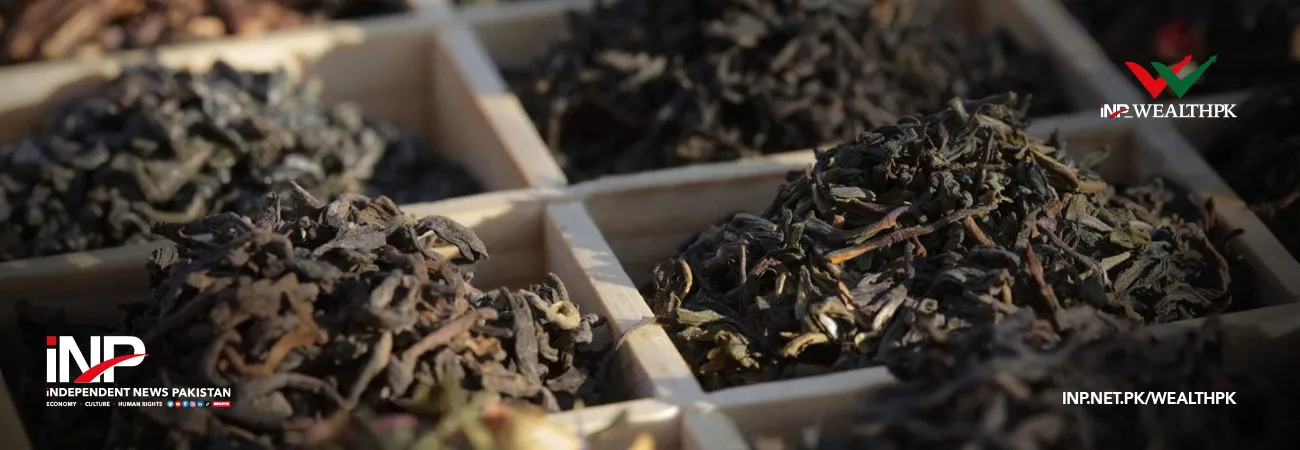آئی این پی ویلتھ پی کے
Muhammad Luqman
Eidul Azha is not only a profound religious occasion but also a powerful driver of economic activity in Pakistan and other parts of the world. From cattle markets to retail and charity, its influence is felt across economic and social sectors. While challenges such as inflation persist, the festival’s enduring economic significance underscores its role as a catalyst for prosperity, especially in the rural areas of Pakistan, where agriculture and livestock go side by side.
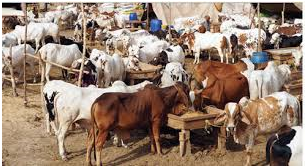
According to economic experts, the economic impact of activities related to trade of sacrificial animals and associated activities on this Eidul Azha is estimated to be around Rs1 trillion, including cost of sacrificial animals and shopping by revellers.
The total economic imprint of the animals sacrificed is estimated on the basis of hides and skins received by tanneries through hide markets (Chamra Mandis). Pakistan’s tanneries acquire hides through brokers and middlemen for leather preparation, making Eid a significant source of raw materials for Pakistan’s leather industry.
“Total animals expected to be sacrificed on Eidul Azha this year are likely to be around 6.6 million worth $1.9 billion (Rs543 billion),” Agha Saiddain, former chairman of Pakistan Tanners Association, said in an interview with WealthPK. He said that the animals to be sacrificed this time around include two million cows, 3.6 million goats, 0.8 million sheep, 60,000 camels and 0.14 million calves.
“Due to depression in the international leather market, the prices of hides and skins are likely be less as compared to the previous years,” Saiddain warned. In addition, he said that butchers will charge an estimated amount of Rs30 billion for the slaughter of sacrificial animals.
Eidul Azha generates opportunities for sellers of fodder and feed for the animals too who set up kiosks and shops across the country ahead of the festive occasion. Eye-catching colourful garlands, crowns, anklets and bells are also available on these shops to attract citizens, especially children and teenagers who want to decorate their sacrificial animals.
Economists believe that the total economic activity generated by the festival of sacrifice is not less than Rs1 trillion ($3.7 billion), including the trade of sacrificial animals and purchase of new clothes, shoes and other items to celebrate the festival.
“The major impact is going to be on the rural population who rear animals to sell on the occasion of Eidul Azha,” Prof Qais Aslam, the head of economics department at a university in Lahore, said. Talking to WealthPK, he said that livestock is a major chunk of the agriculture sector that forms 23% of Pakistan’s GDP.
Aslam said besides the tending of small animals by poor strata of rural population, big bull farms have also been set up by entrepreneurs to meet the needs of high-end sacrificial animal markets in big urban centres like Lahore, Karachi, Islamabad and Faisalabad.
He said that hides and skins received by charity organisations help finance their social activities round the year. According to farmers associations, goat and sheep tending in rural areas is also a source of women’s economic empowerment. “Most of the women in Punjab villages tend goats and sell them on the occasion of Eidul Azha,” said Ebadur Rehman Khan, Director of Farmers Associates Pakistan.
“The money raised by these women is spent on marriages of their sons and daughters and even the construction of homes,” he added. Rehman said that Eidul Azha helps inject a huge amount of capital into Pakistan’s rural economy every year that has lately been in shambles due to poor harvests and lower crop returns.
Credit: INP-WealthPk


